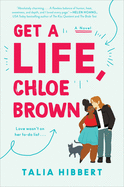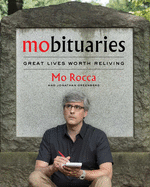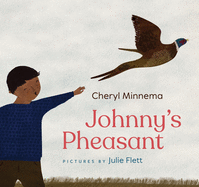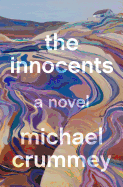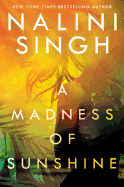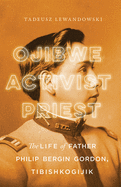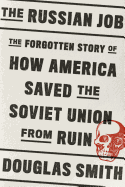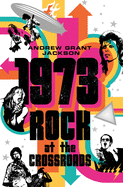Tuesday, December 10, 2019
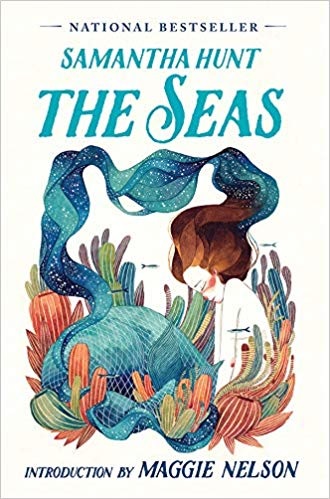 The world of Samantha Hunt's first novel, The Seas, is dark, alcohol-soaked, a bit haunted and, at many points, indistinguishable from the ocean. The protagonist, an unnamed 19-year-old, might be a mermaid, or she might be insane. She is in love with an alcoholic veteran named Jude, more than a decade older than she. They live in a secluded fishing community, where the ocean acts as a sort of draconian security force, keeping them trapped. Like all of Hunt's books, The Seas (Tin House, $15.95) moves seamlessly between reality and hallucination, transforming human bodies into strange creatures, externalizing turbulent internal forces.
The world of Samantha Hunt's first novel, The Seas, is dark, alcohol-soaked, a bit haunted and, at many points, indistinguishable from the ocean. The protagonist, an unnamed 19-year-old, might be a mermaid, or she might be insane. She is in love with an alcoholic veteran named Jude, more than a decade older than she. They live in a secluded fishing community, where the ocean acts as a sort of draconian security force, keeping them trapped. Like all of Hunt's books, The Seas (Tin House, $15.95) moves seamlessly between reality and hallucination, transforming human bodies into strange creatures, externalizing turbulent internal forces.
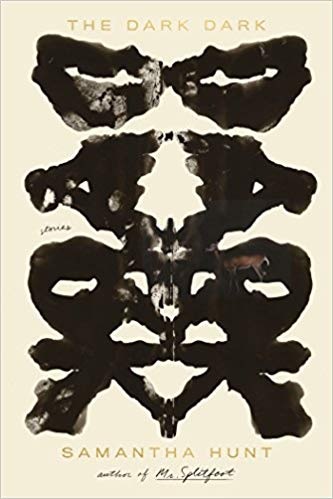 In The Seas, this force is the desire the protagonist has for Jude: it invades and distorts her body into an inhuman shape, that of a mermaid. In Hunt's short story "Beast" from her collection The Dark Dark (FSG, $15), a guilty wife sprouts antlers and grows hooves each night while she sleeps. In Hunt's Mr. Splitfoot (Mariner, $16.99), some people turn into shrieking mediums, some are disfigured by chemicals, and one, a woman named Cora, becomes pregnant, a kind of transformation that is not often the stuff of gothic fiction or horror, but is profound nonetheless.
In The Seas, this force is the desire the protagonist has for Jude: it invades and distorts her body into an inhuman shape, that of a mermaid. In Hunt's short story "Beast" from her collection The Dark Dark (FSG, $15), a guilty wife sprouts antlers and grows hooves each night while she sleeps. In Hunt's Mr. Splitfoot (Mariner, $16.99), some people turn into shrieking mediums, some are disfigured by chemicals, and one, a woman named Cora, becomes pregnant, a kind of transformation that is not often the stuff of gothic fiction or horror, but is profound nonetheless.
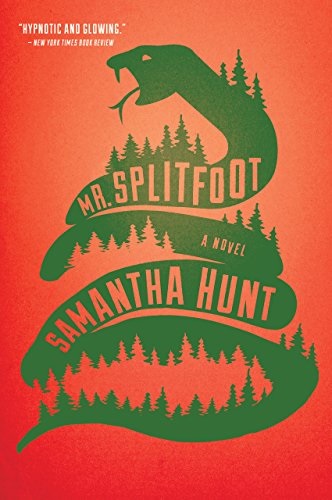 As central as these metaphors are to her writing, Hunt emphasizes the humanity, the corporeality of the body. Cora describes the "locked door in [her] stomach" and the "lung-tissue, tiny see-through fingers, hair fine enough to spin webs." The Seas' protagonist experiences her love for Jude through all of her senses: she talks about wishing to drink his sweat, taste the inside of his ears, swallow a piece of his flesh. Hunt discusses the ways that desire often, by some osmotic force, encourages people to take on the mannerisms and habits of their loved ones, to adopt an entirely new body logic. In a canon that is as haunted as it is beautiful, Hunt makes clear just how volatile and extraordinary the human body is. --Emma Levy, publishing assistant, Shelf Awareness
As central as these metaphors are to her writing, Hunt emphasizes the humanity, the corporeality of the body. Cora describes the "locked door in [her] stomach" and the "lung-tissue, tiny see-through fingers, hair fine enough to spin webs." The Seas' protagonist experiences her love for Jude through all of her senses: she talks about wishing to drink his sweat, taste the inside of his ears, swallow a piece of his flesh. Hunt discusses the ways that desire often, by some osmotic force, encourages people to take on the mannerisms and habits of their loved ones, to adopt an entirely new body logic. In a canon that is as haunted as it is beautiful, Hunt makes clear just how volatile and extraordinary the human body is. --Emma Levy, publishing assistant, Shelf Awareness
The Innocents
by Michael Crummey
"They were left alone in the cove then.... A body must bear what can't be helped." Michael Crummey (Sweetland; Galore) rivets and flays his readers with The Innocents, a novel of innocence and hardship and what is intrinsically human.
"They were still youngsters that winter," begins the story, in the season when siblings Evered and Ada lose their family: first their baby sister dies, then their parents, one after the other. Following these events of just the first five pages, the two children fumble through the tasks their parents had struggled to complete. Evered fishes in a small boat in the Newfoundland cove that is all they have ever known. Ada gardens, after both children haul seaweed and caplin (small fish), turning them stinking into the scant soil. They pick berries in the fall, collect caplin in the spring, fish for cod all summer and salt it throughout the season. Twice a year they expect a visit from The Hope, the schooner that brings flour, peas, salt meat, tea, molasses and eventually rum, on credit against salt cod.
A gifted writer, Crummey shows imagination and compassion for his young protagonists and a care for the oddities of language specific to time and place. The Innocents is deeply pained and enchanting, full of small joys and victories as well as the pressing multitude of aches and challenges that mere living offers to two babes alone in a fierce environment. This searing novel will keep readers engrossed in its harsh world long after its optimistic conclusion. --Julia Kastner, librarian and blogger at pagesofjulia
Discover: Inventive, dark, pathos-evoking, this sensitive novel of survival and discovery asks just how far innocence stretches in a remote cove of Newfoundland.
Nothing More Dangerous
by Allen Eskens
Luckless Boady Sanden hates his hometown of Jessup, Mo. To him, there's nothing more dangerous than being a freshman at a school full of kids who are popular and rich. He's neither, which makes him a loner. The only students who don't ignore him either beat him up or try to enlist him in a secret society of white supremacists. Boady just wants to keep his head down, work hard at Ryke--the plastics factory and the town's biggest employer--and save enough money to escape the backward-thinking community.
When a black woman goes missing, her disappearance is connected to the manager at Ryke, who is fired. The Elgins, a black family, move into the house across the street from Boady. The father, Charles, is the factory's new manager, and his wife, Jenna, befriends Boady's mom, Emma. The son, Thomas, becomes the first friend Boady has had since grade school.
But the friendship between the black family and the white one creates chaos in the neighborhood. A cross is burned on the Elgins' lawn, a house is set on fire and Boady's mom is attacked. He must decide between staying and fighting for what's right or running from his troubles.
Allen Eskens (The Heavens May Fall) doesn't just tap into the experience of growing up in a rural Southern town; Nothing More Dangerous dissects the inner life of a teen forced to confront prejudice and persecution. Boady knows racism is wrong, but feels powerless to stop it. Eskens has the skill to make readers cry during Boady's turmoil, and then cheer as the hapless boy becomes a hopeful adult. --Paul Dinh-McCrillis, freelance reviewer
Discover: A teenager struggles against the bullying, racism and violence in his small Southern town.
Mystery & Thriller
The Andromeda Evolution
by Michael Crichton and Daniel H. Wilson
The late Michael Crichton launched the techno-thriller genre with The Andromeda Strain, and Daniel H. Wilson (Robopocalypse) doesn't miss a beat in this follow-up, The Andromeda Evolution.
In 1967, a military satellite returned to Earth; soon after, nearly all the residents of the nearby town of Piedmont, Ariz., died. A team of scientists, led by Dr. Jeremy Stone, discovered the cause: an alien microparticle that, when inhaled, causes blood to coagulate and kill almost instantly. Dubbed the Andromeda Strain, it could not only self-replicate but mutate. The United States sponsored Project Eternal Vigilance and secretly monitored the planet for a new outbreak. For 50 years, all was quiet, until something inexplicable materializes in the Amazon rain forest.
The anomaly grows exponentially. Led by the U.S. military, a team of scientists is quickly assembled to explore it, aided by Dr. Sophie Kline, stationed in the International Space Station. Controversially, James Stone, son of Jeremy Stone, is included, to the dismay of the team's leader, Nidhi Vedala. Joined by Kenya's Harold Odhiambo and China's Peng Wu, this international team sets out to approach the anomaly. They're astonished when they first see it, and their disbelief is compounded by the terrible realization that the Andromeda Strain has evolved yet again. Is this an incident that can be contained, or is this the beginning of the extinction of the human race?
Wilson grounds this sometimes dizzyingly paced work of fiction in the realities of science, geopolitics and the exploitation of Brazil's indigenous people. Fans of the original, as well as new readers, will be swept up in Wilson's thrilling sequel. --Frank Brasile, librarian
Discover: A team of scientists races to contain a deadly microorganism after an otherworldly phenomenon appears in the Amazon rain forest.
A Madness of Sunshine
by Nalini Singh
Nalini Singh (the Psy/Changeling series) turns to suspense in A Madness of Sunshine, transporting readers to the remote, beautiful and dangerous coast of New Zealand's South Island. Acclaimed pianist Anahera Rawiri returns to the isolated community of Golden Cove, seeking solace after discovering the infidelity of her recently deceased husband. When a gifted local photographer disappears, Anahera joins forces with newcomer and town detective Will Gallagher to solve the mystery.
As they search for the missing girl, each clue they uncover seems further to complicate the case; any number of suspects seem viable. Could this quaint small town, where everyone knows their neighbor, be harboring a killer? When Anahera and Will find links to unexplained disappearances of tourists in the past, they're forced to consider whether a single person may have committed multiple murders. Anahera struggles to accept the possibility that one of her childhood friends may be a killer. Could madness be concealed behind one of the familiar faces she knows so well? She herself fits the profile of the young women who have died--could she be next on the killer's agenda? Anahera and Will must work swiftly to resolve the case if she is to escape being the next victim.
In this intriguing tale, a complicated plot with multiple possible villains challenges readers to identify the murderer. The book's world of coastal New Zealand is wonderfully brooding, moodily atmospheric and possesses a nearly sentient quality that's riveting and blood-chilling. Fans of suspense and thriller novels will thoroughly enjoy this twisty story. --Lois Faye Dyer, writer and reviewer
Discover: A renowned musician returns to her childhood home in New Zealand to discover a web of secrets, lies and danger threatening her community.
Romance
Would Like to Meet
by Rachel Winters
Debut author Rachel Winters hits all the right notes in Would Like to Meet. Single Londoner Evelyn Summers once dreamed of becoming a screenwriter. But she has settled into being the "longest-serving assistant in the industry," working for William Jonathan (Monty) Montgomery, an eccentric, high-powered, old-school talent agent. Things take a turn, however, when Monty reassures production duo Sam-and-Max that Evie can light a fire under screenwriter Ezra Chester and convince him to finish a script for which he's been contracted. Evie perceives Ezra--an "Academy Award winner, charitable heartthrob, and industry darling"--to be an "arrogant, insufferable arse." The stakes are raised when a possible promotion to agent is dangled before Evie. The problem, however, is that Ezra believes "Oscar winners... don't write rom-coms."
In order to get Ezra to fulfill his commitment on deadline and convince him to stop being so "short-sighted about the genre," Evie agrees to serve as his inspiration and "living proof." She proposes that she can meet a man the way it happens in rom-coms.
What ensues is a lively, laugh-out-loud story filled with raucous scenes of Evie's madcap meetings and zany mishaps in fulfilling her end of the bargain--from road trips to holidays to chance encounters. Everything that can go wrong does, including Evie making a child vomit, leaving her name and number in random books around London, and accidentally joining an erotic book group. Would Like to Meet is a fun and lively millennial rom-com with a heartfelt message that cleverly plays off tropes from a host of contemporary romance movies. --Kathleen Gerard, blogger at Reading Between the Lines
Discover: An aspiring talent agent sets out to prove to an Oscar-winning screenwriter that people can fall in love just as they do in the movies.
Get a Life, Chloe Brown
by Talia Hibbert
Illness and disability are central to the U.S. debut novel from prolific British author Talia Hibbert. This first in a proposed series begins with Chloe Brown--a British woman of color who battles the invisible yet chronic and debilitatingly painful effects of fibromyalgia. As Chloe takes her daily walk--as prescribed by her physiotherapist--she witnesses a horrific car accident that nearly involves her. Shocked, the lovably eccentric, single computer geek walks away uninjured, and decides she wants more out of life. Having recently moved into her own apartment--from her wealthy family's mansion--Chloe devises a wish list of experiences she longs to fulfill. This includes having a drunken night out, riding a motorcycle, camping, doing "something bad," traveling the world without checking luggage and having meaningless but pleasurable sex.
Redford "Red" Morgan, the rough-and-tumble superintendent of Chloe's apartment complex, becomes the initial object of her quest of daring rebellion. Red resents Chloe's upper-crust background. And while he infuriates and exasperates Chloe, she is drawn to his good looks, tattoos and motorcycle. She's further intrigued after she spies him through her apartment window one night--Red, she learns, is secretly an aspiring artist. The two forge an unlikely romance, where their opposites-attract, biracial affections ultimately force both of their vulnerable souls to grow beyond their emotional wounds and insecurities.
Hibbert's sparkling, diversity-centric romantic comedy--replete with grit, wit and flirty sex--introduces a memorable offbeat anti-heroine with whom readers will fall in love. --Kathleen Gerard, blogger at Reading Between the Lines
Discover: Romantic sparks fly between a woman of color battling chronic disability and a rough-and-tumble aspiring artist in this opposites-attract rom-com.
Biography & Memoir
Mobituaries: Great Lives Worth Reliving
by Mo Rocca and Jonathan Greenberg
A good obituary is a thing of beauty. With "the sweeping drama of a life packed into a few inches of print," an obit aims to give each one of us the sendoff we deserve. But not always, and that's where Mo Rocca comes in.
In Mobituaries, a companion to the podcast of the same name, Rocca shares "mobits" for people who didn't quite get their due initially. Consider Beau Brummell, who almost single-handedly changed men's fashion, but suffered from syphilis-induced dementia at the end and died penniless. Vaughn Meader's impersonation of John F. Kennedy earned him a bestselling comedy album, but his career ended the day Kennedy was assassinated. Rocca looks at forgotten forerunners like Bessie Coleman, the first African American and Native American woman to earn a pilot's license, and Ada Lovelace, who wrote the first algorithm based on an early prototype for a computer--in 1843!
Equally intriguing are those whose accomplishments were overshadowed by their faults. Herbert Hoover will forever be remembered for presiding over the beginning of the Great Depression, not for his international famine relief efforts, including saving Belgians from starvation during World War I as a private citizen. And Founding Father Thomas Paine, author of the influential Common Sense, whose radicalism and belligerence tarnished his reputation so badly that just six mourners attended his funeral.
Delightfully, mobits aren't limited to people. The death of homosexuality as a mental illness (1952-1973), the death of the station wagon (1949-2011) and the death (murder, really) of two beloved Southern live oak trees on the Auburn University campus (1937-2013) are interesting reads. With wit, exuberance and a touch of mischievousness, Mobituaries provides fascinating facts for all ages. --Frank Brasile, librarian
Discover: This eclectic collection celebrates people (and things) that have passed.
Ojibwe, Activist, Priest: The Life of Father Philip Bergin Gordon, Tibishkogijik
by Tadeusz Lewandowski
Ojibwe, Activist, Priest: The Life of Father Philip Bergin Gordon, Tibishkogijik is the first academic biography of an important figure whose fight against the Bureau of Indian Affairs and for Native rights was overshadowed by his Catholic proselytizing, his arrogant attitude and his controversial leadership, which led to the downfall of the Society of American Indians. Now, Tadeusz Lewandowski (Red Bird, Red Power: The Life and Legacy of Zitkala-Ša), scholar and head of the department of American literature and culture at the University of Opole in Poland, shines a spotlight on this flawed character who was ultimately driven by a dedication to the protection and improvement of circumstances for his people.
The first indigenous person to be ordained as a Catholic priest within the United States and who ministered primarily to Native peoples, Philip Bergin Gordon (1885-1948) was fiercely proud of his Ojibwe heritage. Nicknamed "Wisconsin's Fighting Priest," Gordon "spent much of his life fighting against the government institution he felt caused more pain to his people than any other: the Bureau of Indian Affairs." Sadly, Gordon's activist efforts resulted in more losses than wins. His contributions to the Progressive-era Native activism of the early 20th century have remained largely unrecognized due to his conviction that "religious and cultural assimilation were necessary for the salvation and survival of Indians within the United States." Yet by acknowledging that Gordon was a product of his time and upbringing, Lewandowski's biography restores Gordon's contributions to the fight for Native rights, a man who "stood up for his humanitarian beliefs without compromise." --BrocheAroe Fabian, owner, River Dog Book Co., Beaver Dam, Wis.
Discover: This sparse but informative biography of Father Philip Bergin Gordon, Tibishkogijik (Ojibwe), reminds readers of his outspoken activism for Native rights during the early 1900s.
History
The Russian Job: The Forgotten Story of How America Saved the Soviet Union from Ruin
by Douglas Smith
In The Russian Job: The Forgotten Story of How America Saved the Soviet Union from Ruin, historian Douglas Smith takes readers to early 1920s Soviet Russia. The country was gripped by famine, with millions in danger of starvation and cannibalism a horrifying new reality. Despite the official view of Western governments as capitalist predators, Soviet leader Vladimir Lenin had no choice but to request assistance from Europe and the United States. By far the largest share of aid came from the U.S. under the auspices of the American Relief Administration (ARA), the brainchild of Herbert Hoover.
Covering the two eventful years of ARA deployment in Russia, The Russian Job is a vivid, unforgettable account of how the U.S. distributed food, medicine and clothing to millions across the vast, restless country. Smith (Rasputin) draws on officials' diary entries, letters home to loved ones and photographs. The result is a skillful and haunting depiction of individual suffering among starving peasants; Russian couriers and railway workers, whose job it was to transport supplies across a broken transportation system; and ARA officials who executed Hoover's goodwill mission. These officials remained committed to their work while enduring life-threatening illnesses and soul-numbing winters.
Yet The Russian Job also transcends these stories of suffering to unearth exquisite instances of joy, romance, love and generosity, all of which flourished despite adversity and hardship.
Smith's bold resurrection of this neglected period in Russian-U.S. history is a remarkable accomplishment that will mesmerize readers with all the splendid elements of a compelling, real-life drama. --Shahina Piyarali, writer and reviewer
Discover: A historian revisits U.S. humanitarian efforts in famine-stricken Soviet Russia in the early 1920s.
Performing Arts
1973: Rock at the Crossroads
by Andrew Grant Jackson
In the thorough 1973: Rock at the Crossroads, Andrew Grant Jackson examines the music of the year that he says is responsible for more songs played on classic rock radio than any other.
Jackson (1965: The Most Revolutionary Year in Music) breaks 1973 into sections named for the seasons, and takes readers through themed chapters on the year's major musical events. Two chapters focus on singer-songwriter upstarts Bob Dylan, Bruce Springsteen and Neil Young. Jackson devotes individual chapters to Pink Floyd's The Dark Side of the Moon, Led Zeppelin's Houses of the Holy, Joni Mitchell's Court and Spark and other now-canonized albums recorded or released in 1973. Throughout his analysis, Jackson makes room for the odd Spinal Tap-ian detail. For one: while discussing the making of Sabbath Bloody Sabbath, Jackson notes that during his downtime, Black Sabbath guitarist Tony Iommi liked to listen to the Carpenters and Peter, Paul and Mary.
Jackson admits that he leaned on unscholarly online sources like Wikipedia for his research, but chapter notes make clear that he also turned to print, and lots of it, especially the featured artists' memoirs. (Most seem to have written one.) While 1973 is an invaluable reference work, complete with black-and-white photos, reading it like a novel provides one of that literary form's great payoffs: empathy with a story's characters. What's more, skipping around in 1973 could mean missing one of Jackson's debatable declarations ("The album would have a better reputation today if it opened with..."). For rock purists, these may be fightin' words, and Jackson should watch his back: upon finishing 1973, some readers may reach for their turntables, needles blazing. --Nell Beram, author and freelance writer
Discover: This chronicle of what was arguably the biggest year in rock contextualizes its musical markers and considers the artists behind them.
Children's & Young Adult
Johnny's Pheasant
by Cheryl Minnema, illus. by Julie Flett
While driving home from the market, young Johnny asks his grandmother to pull over: he has spotted something by the side of the road. It turns out to be a pheasant; "Can I keep him?" he asks. Grandma is leery. She tells Johnny that she suspects that the bird has been struck by a car. Still, she acquiesces: "I can sure use his feathers for my craftwork." Johnny responds: "Hoot! Hoot!--the first of several such gleeful-goofy outbursts.
Once they've returned home, Johnny sets the pheasant in a box ("his bed until I gather sticks"). After the boy opens the door, the bird lets out a "Hoot! Hoot!" and flies outside. Johnny and Grandma follow and watch the pheasant soar. A lone feather drops at Johnny's feet. Clutching it, he runs around, imitating the bird. He finally stops before Grandma, and hands her the feather. Now she has a feather for her craftwork, the bird has its freedom, and Johnny has had an experience worth hooting about.
Johnny's Pheasant delivers a message--as Grandma says, "Pheasants belong in the wild"--with a feather-soft touch. Cheryl Minnema (Hungry Johnny), a member of the Mille Lacs Band of Ojibwe, drives her story with easygoing humor but not one superfluous word; Grandma's "Howah" is all that's needed to make clear that she and Johnny are Indigenous. Cree-Métis artist Julie Flett's (My Heart Fills with Happiness) sharp-edged geometric art, rendered in a subdued earthy palette, recalls the collage work of Ezra Jack Keats, although the enticing textures--bristly olive-colored grass, mottled floorboards with nailheads--are Flett's own. --Nell Beram, freelance writer and YA author
Discover: In this playful tale, an Indigenous boy convinces his grandmother to let him bring home a pheasant that they spot by the side of the road.
Not a Bean
by Claudia Guadalupe Martinez, illus. by Laura González
Early one morning, "una oruga" bores its way into one of the small pods. Inside, the caterpillar finds food and water. When the seedpod dries and hardens, it breaks open and falls to the desert sand. "Dos saguaros" decorate the warming landscape as the caterpillar maneuvers the Not a Bean into a shady spot among the rocks. Nearby, "tres cascabeles" rattle their tails; the Not a Bean jumps into a crevice, where it stays safe from "cuatro coyotes" and "cinco cuervos." Rain from "seis nubes" takes the Not a Bean downriver, where "siete amigos explore." The friends draw "ocho óvalos" in the dirt and play a game with the Not a Bean plus eight other jumpers, making "nueve saltarines” in all. That night, under "diez estrellas" that twinkle in the sky, the Not a Bean grows quiet. The caterpillar inside spins a cocoon and, many days later, "a majestic polilla" emerges, then "soars into the sky."
Martínez's fascinating story presents the life cycle of the jumping bean moth, while González's digital illustrations support and illuminate the text. Back matter describes the science in greater detail, and includes both environmental context and an explanation of the jumping bean's appeal to children. Additionally, Not a Bean's well-placed Spanish words and phrases serve as an introduction to readers who do not speak Spanish and a welcome invitation to those who do. --Lynn Becker, blogger and host of Book Talk, a monthly online discussion of children's books for SCBWI
Discover: The life cycle of the jumping bean moth is detailed in this picture book that also includes an introduction to Spanish numbers and vocabulary.


